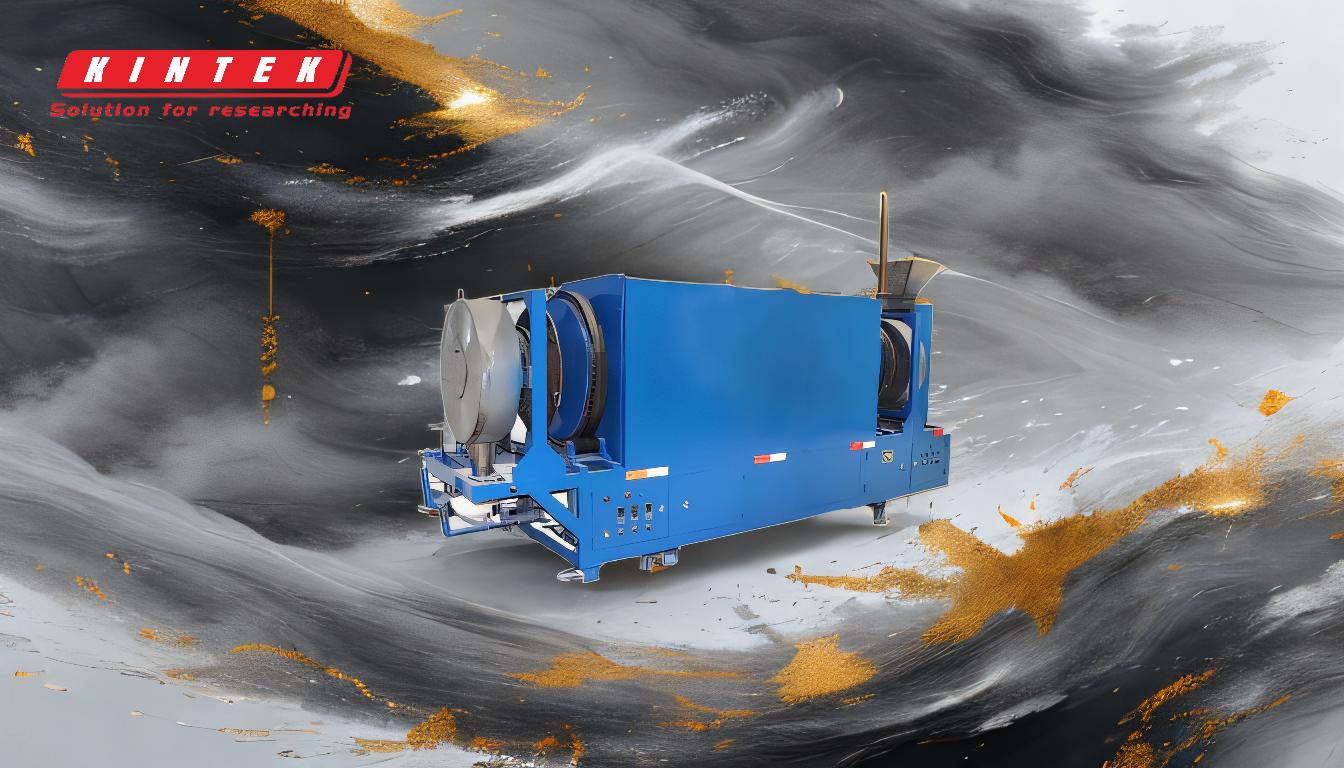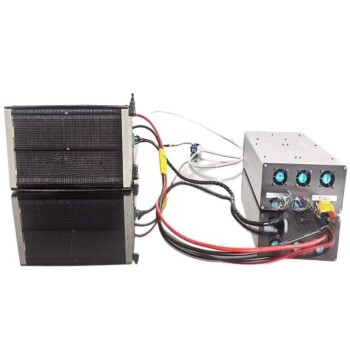The pyrolysis plant process involves heating organic materials such as biomass, plastics, or tires in an oxygen-free environment to break them down into useful byproducts like syngas, bio-oil, and bio-char. The process typically includes feeding the material into a reactor, heating it to temperatures between 200-900°C, and decomposing it into its constituent parts. The syngas can be used as fuel, bio-oil can be refined for industrial or transportation use, and bio-char can serve as a soil enhancer or sorbent. The plant also incorporates safety and control systems to ensure efficient and safe operation.
Key Points Explained:

-
Material Preparation:
- Shredding and Drying: The feedstock, such as biomass, plastics, or tires, is first shredded into smaller pieces and dried to remove moisture. This ensures optimal conditions for pyrolysis.
- Preprocessing: Non-plastic materials or impurities are removed to prevent contamination and ensure the efficiency of the pyrolysis process.
-
Feeding into the Reactor:
- The prepared material is fed into a pyrolysis reactor. The reactor is designed to operate in an oxygen-free environment to prevent combustion and ensure the material decomposes rather than burns.
-
Heating and Decomposition:
- The reactor heats the material to temperatures ranging from 200°C to 900°C, depending on the feedstock and desired end products.
- The heat causes the material to thermally decompose, breaking down into syngas (a mixture of hydrogen, carbon monoxide, and other gases), bio-oil (a liquid fuel), and bio-char (a solid carbon-rich material).
-
Separation of Byproducts:
- Syngas: The gaseous byproduct is separated and can be used directly as a fuel or further processed into biofuels.
- Bio-oil: The liquid byproduct is condensed from the vapor phase and can be refined for use in transportation or industrial applications.
- Bio-char: The solid residue settles at the bottom of the reactor and can be used as a soil amendment to improve soil health or as a sorbent for environmental cleanup.
-
Cooling and Collection:
- The reactor is cooled after the pyrolysis process is complete. The bio-char is discharged and collected for further use.
- Non-condensable gases are purified and often recycled back into the combustion chamber to provide heat for the process, enhancing energy efficiency.
-
Emission Control:
- Smoke and other emissions from the process are passed through a de-dusting tower or filtration system to meet environmental standards. This ensures that the plant operates in an environmentally friendly manner.
-
Safety and Control Systems:
- The plant is equipped with advanced safety and control systems to monitor and regulate temperature, pressure, and other critical parameters. This ensures the process is efficient, safe, and consistent.
-
Storage and Dispatch:
- The final products (syngas, bio-oil, and bio-char) are stored in appropriate containers or tanks before being dispatched for use or further processing.
By following these steps, a pyrolysis plant efficiently converts waste materials into valuable resources, contributing to waste management and sustainable energy production.
Summary Table:
| Step | Description |
|---|---|
| Material Preparation | Shredding, drying, and removing impurities to optimize pyrolysis conditions. |
| Feeding into Reactor | Material is fed into an oxygen-free reactor to prevent combustion. |
| Heating & Decomposition | Heated to 200-900°C, breaking down into syngas, bio-oil, and bio-char. |
| Separation of Byproducts | Syngas, bio-oil, and bio-char are separated for various applications. |
| Cooling & Collection | Bio-char is collected; non-condensable gases are recycled for energy efficiency. |
| Emission Control | Emissions are filtered to meet environmental standards. |
| Safety & Control | Advanced systems monitor temperature, pressure, and safety. |
| Storage & Dispatch | Final products are stored and dispatched for use or further processing. |
Discover how a pyrolysis plant can transform waste into valuable resources—contact our experts today to learn more!















